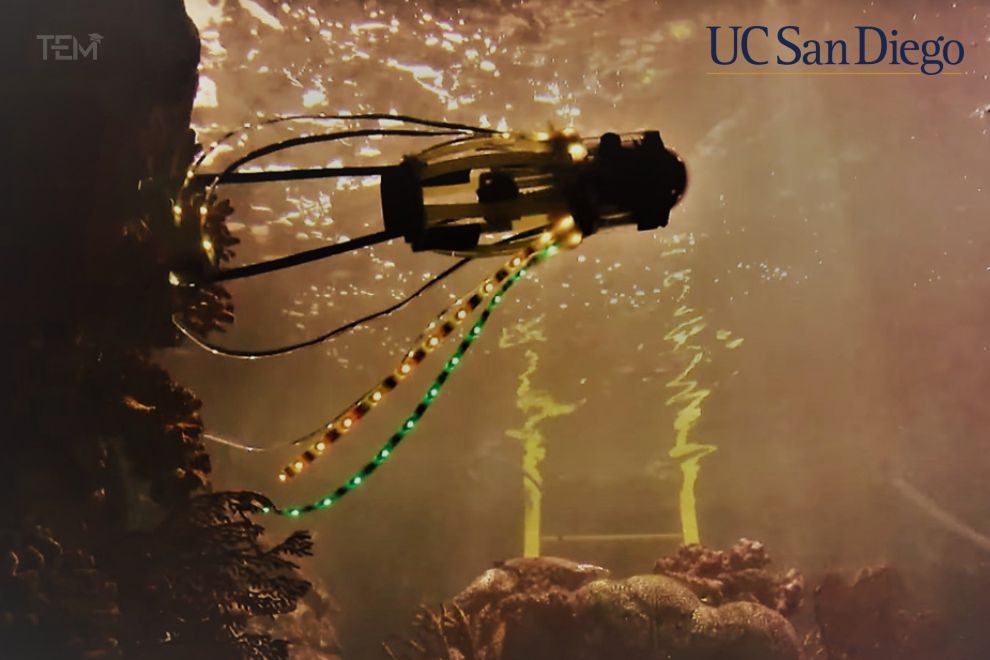
There was a time when helicopters were used to take aerial shots, and now almost replaced by drones. Similarly, underwater exploration pressurized scientists to create robots that can record marine life. Now to swim more efficiently, some researchers have come up with a small but revolutionary creature-like underwater drone. Engineers at the University of California-San Diego have tapped creativity into sea life. Inspired by squids, the team has built a squid-like robot that can propel itself by generating jets of water, just like a real thing.
Using soft robots for underwater exploration is important to protect both fauna and flora. But most soft robots move slowly. This wireless squid robot carries its own power source inside its body, and has overcome electrical challenges as it carries sensors, such as a camera, proved to be successful.
Engineers used the squid as inspiration because it is the fastest aquatic invertebrate, thanks to its jet propulsion mechanism. Similarly, this squid robot takes a volume of water into its body while storing elastic energy in its skin and flexible ribs. The robot then changes body shape, releasing the energy and generating a jet of water to propel itself. Engineers tested the robot in a laboratory setting. Then they took it out for a swim at the UC San Diego Birch Aquarium. They showed that the robot can change direction. The squidbot travels at a speed of around 18 to 32 centimeters per second, which is about 1/2 miles per hour. Faster than most other soft robots.
At rest, the squidbot holds the shape of a paper lantern and flexible ribs act like springs. Each end of the robot has a circular plate where the ribs connect, with one being connected to a nozzle that takes in and ejects the water.
\”Essentially, we recreated all the key features that squids use for high-speed swimming. This is the first untethered robot that can generate jet pulses for rapid locomotion like the squid and can achieve these jet pulses by changing its body shape, which improves swimming efficiency,\” said Michael T. Tolley, Department of Mechanical and Aerospace Engineering at UC San Diego.</p





